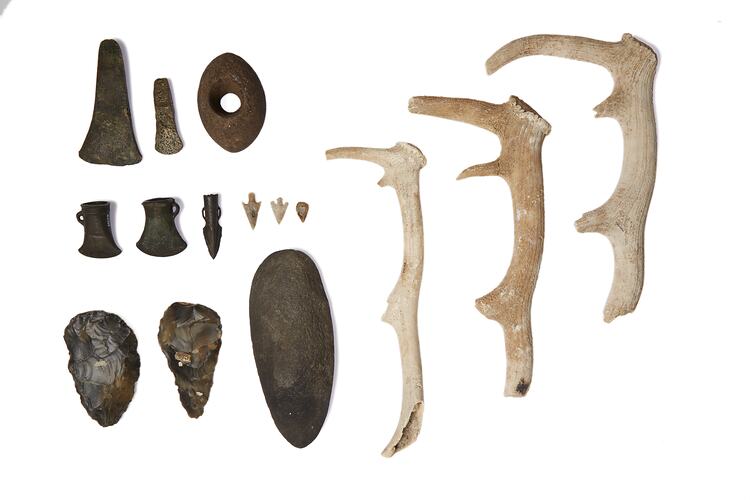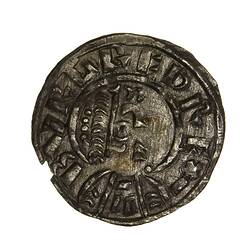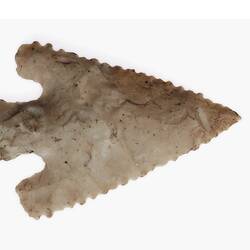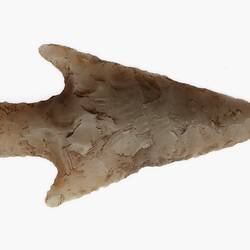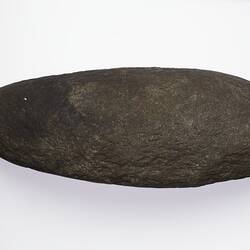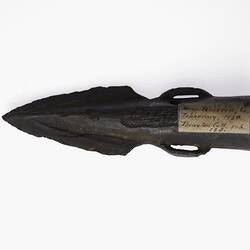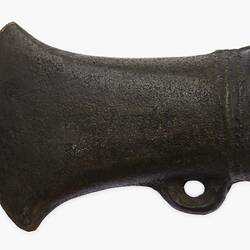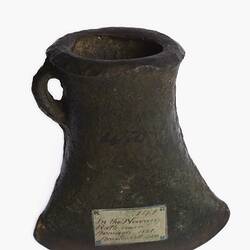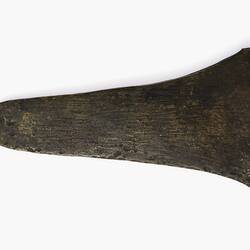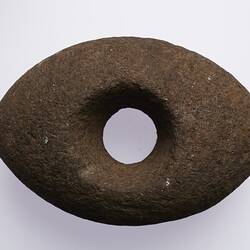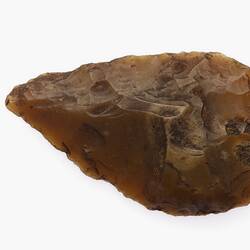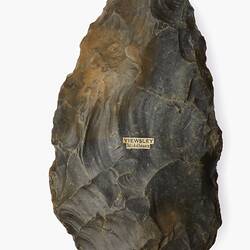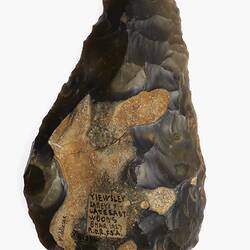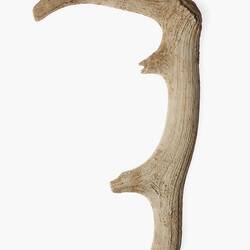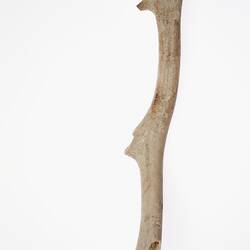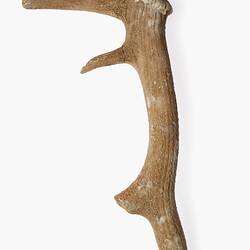These evocative fragments include collections from Viking-age Britain. But the story also arcs back much further in time. The First Peoples department at the museum holds sharp, intentional hand axes crafted in what is today England by our hominin kin during the Palaeolithic period hundreds of thousands years ago. Our collections also span the Bronze and Neolithic periods, the Roman era, and photographs of stone tools and of archaeological and megalithic sites (think Stone Henge). Quietly nestled in cabinets, pieces including fragments of Roman glass, Bronze-age spearheads and axes, and dramatic picks made of deer antler all promise to reveal rich and complex pasts. You can browse a selection of these objects below.
History of the UK and Irish Collections
Archaeological collections from around the world became part of the remit of the National Museum of Victoria at the turn of the twentieth century. In earlier decades, these artefacts flowed through the Board of Trustees of the Public Library, Museums and National Gallery of Victoria - the group of Melbourne worthies who stewarded what they saw as the young city's cultural beacons.
The earliest known archaeological acquisition from the UK or Ireland in the First Peoples department's collection - an arrowhead from Loch Lomond in Scotland - came to the NGV in 1876 as a 'curiosity'. From the mid-1880s the trustees pursued exchange with leading scholars and museums in the UK to build holdings of what they saw as "the art of pre-historic times" (Langton, 5 May 1891). They leveraged connections with key antiquarians in England such as John Lubbock (1834-1913), John Evans (1823-1908) and Augustus Wollaston Franks (1826-1897) and in return reaped major acquisitions of European finds. These pieces fit within the work of nineteenth-century ethnology, a discipline whose practitioners sought to compare and understand different human groups and ultimately graded them according to perceived markers of "progress".
During the 1890s, the collection swelled with stone tools and metalwork procured through the British Museum. Among the 400 or so objects were pieces from the UK, Ireland, Denmark, France, Switzerland, Chile, Japan and India. The intricate relationships that led to this purchase included key trustees of the Melbourne institutions, Sir John Lubbock (a trustee of the British Museum) and the Agent-General of the Colony of Victoria in London. In 1891, the trustees sent an exchange collection of material culture from Australia and the region to London and placed £300 at Lubbock's disposal. Institutional exchanges continued into the twentieth century, with the notable addition of Palaeolithic artefacts from the London Museum in 1933.
All collections come at a price. Exchanges hinged on trustees and curators trafficking cultural materials that belonged to Australian First Nations people and other First Peoples of our region. The nineteenth-century project of ethnology - focused on building a global picture of humanity - was also intensely weighted with racist ideas about hierarchies of "civilisation". This shaped who became the "collector" and who became the target of study. This legacy of the immense dispersal of Indigenous cultural heritage around the world continues to confront First Peoples communities today. The repatriation movement seeks to redress this material history, and museums such as ours work in partnership with communities of origin in caring for these collections.
Today the First Peoples department at Museums Victoria holds hundreds of objects from the UK and Ireland. Join us in this process of research and questioning by browsing a selection of archaeological items that span a sliver of museum history and millennia of human experience.
Bibliography
Tom Griffiths, Hunters and Collectors: The Antiquarian Imagination in Australia (Oakleigh: Cambridge University Press, 1993).
Gareth Knapman, 'Museum Anthropology and Imperial Networks as Cultural Status: The Colonial Ethnology Museum in Nineteenth Century Melbourne', History of Anthropology Newsletter, Vol. 38 (1), June 2011, pp. 3-8.
Edward Langton to Sir John Lubbock, 5 May 1891, British Museum, Department of Africa, Oceania & the Americas, Christie Correspondence [825], Christie Collection correspondence. Copy in First Peoples department archives.
Report of the Trustees of the Public Library, Museums, & National Gallery of Victoria. for the year 1875-6, Government Printer, Melbourne, 1877.
More Information
-
Keywords
-
Authors
-
Article types
